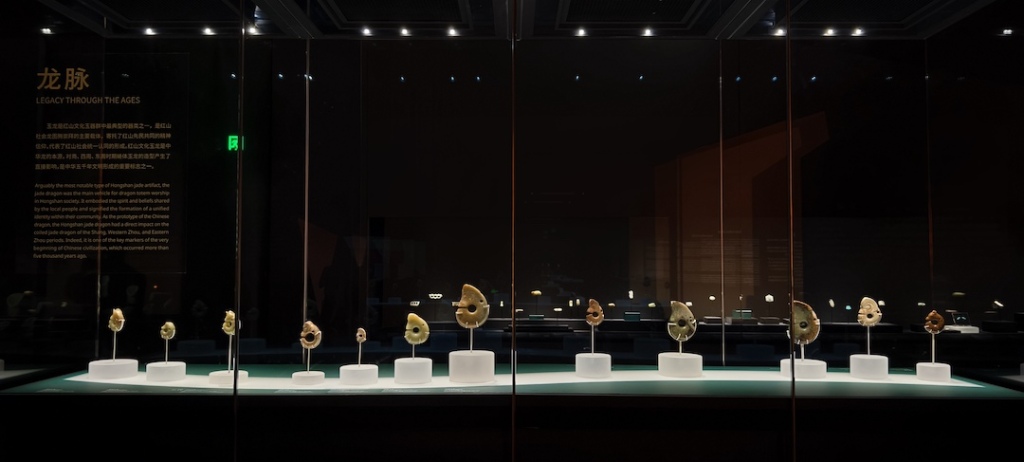
2024 ushered in the Year of the Dragon in the lunar calendar. As one of the twelve zodiac signs, the dragon is the only auspicious creature created by ancient ancestors rather than existing in nature. It is also an important symbol of traditional Chinese culture and embodies the Chinese people's deep emotional sustenance from ancient times to the present - the original love for nature. Worship, the pursuit of good fortune and longevity, the maintenance of ritual authority, and the yearning for beautiful things. The image of the dragon has gone through a long period of evolution, and its cultural connotation has been enriched and deepened over time.
"The Paper: Ancient Art" organizes the collections of the National Palace Museum on both sides of the Taiwan Strait, from the jade dragons of the Hongshan Culture to the dragon seals of the Qing Dynasty emperors and other dragon-related jade collections. It can also give a glimpse of the shape of the dragon and the craftsmanship of jade making from ancient times to the present. changes.
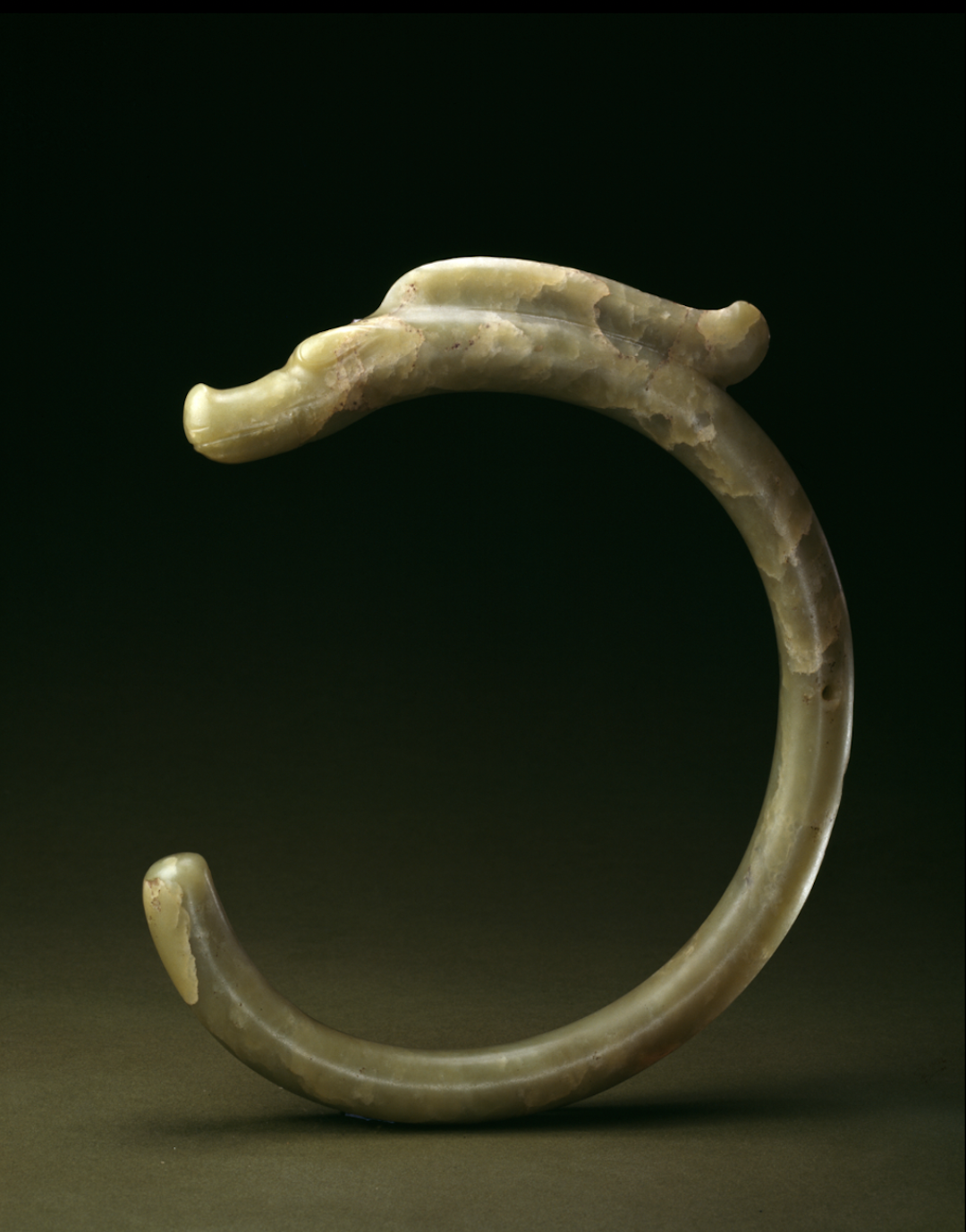
Jade Dragon Neolithic Age Collection of the Palace Museum
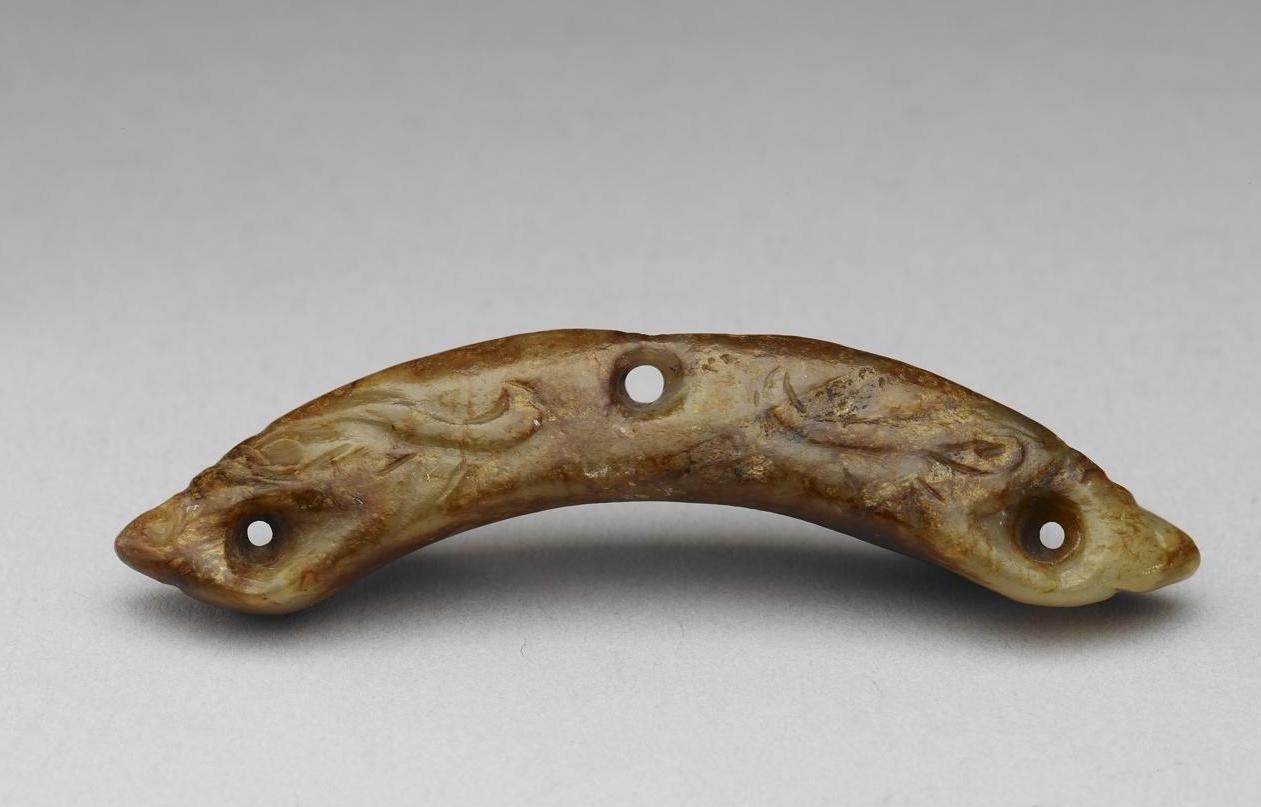
Jade Double-Dragon Shouhuang, Late Hongshan Culture Collection, Taipei National Palace Museum
There is a small hole for hanging at the upper center of this double-dragon garland, and round holes are drilled at the two ends at the mouth of the dragon. Intermittent thin shadow lines and bas-relief techniques are used to mark the floating mane like a long eyebrow. It may have been dyed brown by Qin from the late Ming Dynasty to the early Qing Dynasty.
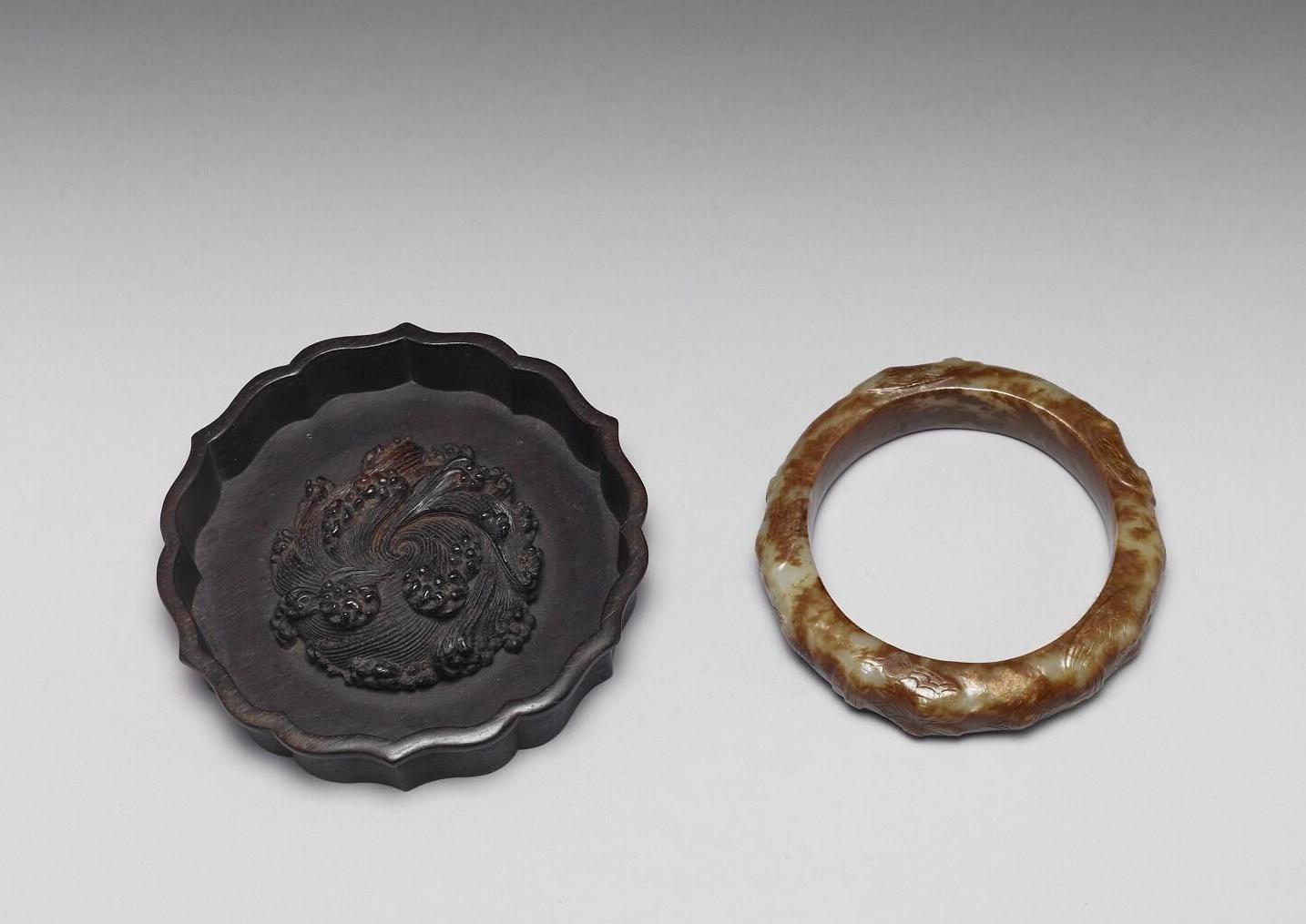
Jade beast and dragon pattern bracelet, early Liangzhu Culture or Shixia Culture, collected by the National Palace Museum, Taipei
This jade bracelet is embossed with five "beast and dragon heads" on the periphery. The surface between each "beast and dragon head" is engraved with a double-layered rhombus pattern, and a double-layered circle is engraved in the center of the pattern. The cheeks are carved with square convolutions. The details of the five "beast and dragon heads" in the relief: a double-layered rhombus pattern is carved on the nose of the facial pattern, a horizontal rib is embossed below the rhombus pattern, and a row of teeth and other features are carved below the horizontal rib, which is consistent with the Liangzhu unearthed from Yaoshan, Yuhang, Zhejiang. The cultural beast dragon pattern bracelet is very similar. But overall it is relatively strong, and this feature is similar to the Shixia Culture bracelet with animal and dragon patterns. This bracelet is the collection of Emperor Qianlong, so it is equipped with a rosewood base.

Jade Dragon, Late Shang Dynasty, Jade Artifact, Collection of the National Palace Museum, Taipei
The vessel is in the form of a ring with gaps, similar to an ear ornament. The dragon head is wider, but is slightly thinner after being polished. Therefore, only a few lines remain for the eyes. The mouth is toothy and has horns. The back is decorated with undulating patterns. Teeth are regular and slightly narrow at the tail. The surface of the body is decorated with curved lines engraved with double hooks. There is a piercing on each of the mandibular teeth and the proximal end of the tail.

Jade dragon pattern from the Western Zhou Dynasty, jade artifact collected by the National Palace Museum, Taipei
On the front and back, double Yin lines are carved with double dragon patterns arranged up and down. The head is at both ends, the body extends to the other side, the head is slightly larger than the tail, and there is a feather pattern on each ventral side. On both ends of the huang, there are other engraved patterns, and each has a circle.
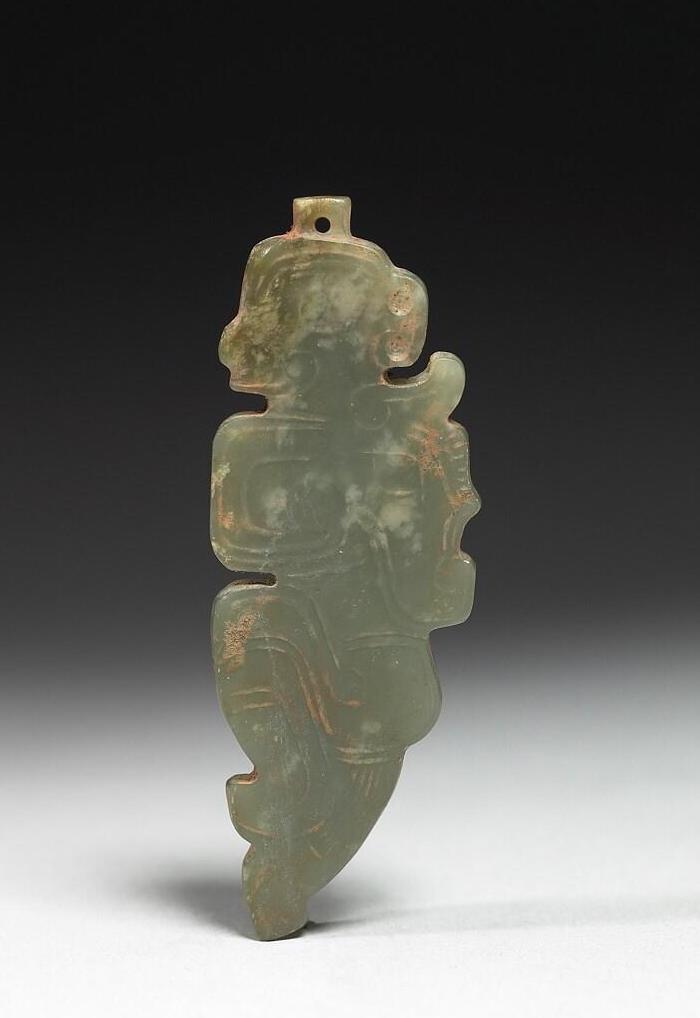
Jade figure with dragon pattern, late Western Zhou Dynasty Collection of the National Palace Museum, Taipei
Jade, blue-grey in color. A crouching profile figure is carved, and the human chest is combined with a dragon motif. There is a square protrusion on the top of the human head, with a hole drilled for tying.
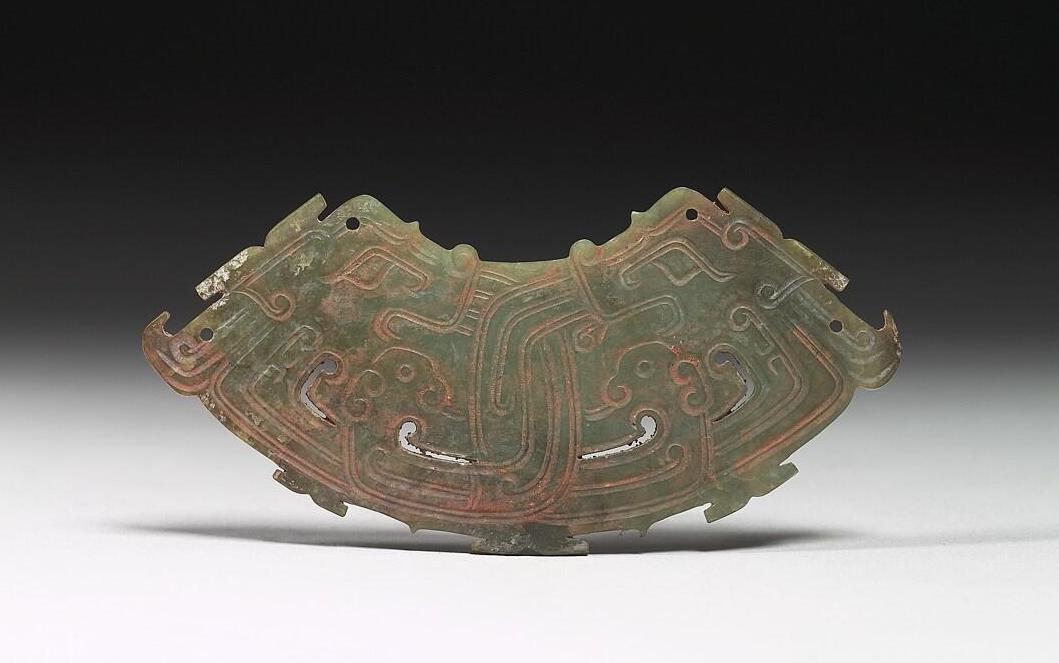
Jade hollow jade sculpture with human and dragon patterns, late Western Zhou Dynasty, collected by the National Palace Museum, Taipei
Light green jade, partially grayish black. The decoration on both sides is the same, with the central axis as the axis of symmetry. The left and right sides are dragons with head horns and snake bodies. The lower edge of the center is a pair of gods and humans with intertwined bodies and distinct ears and noses. The images of dragons and humans are in the shape of commas. hollow partition. The jade huang is a component of the jade pendant, and the jade pendant is a string ornament worn around the neck and hanging down to the abdomen. There are four lacing holes on both sides of this jade huang, which are used to assemble the upper and lower jade components. According to current archaeological knowledge, the number of jade huangs in a set of jade pendants is related to the status and level of the tomb owner. The greater the number, the higher the level. This phenomenon gradually became custom-made in the late Western Zhou Dynasty. This type of simpler gods and dragons is a common style feature in the late Western Zhou Dynasty. The design of this vessel is exquisite, and some cinnabar commonly found in tomb coffins remains on the surface. It is an important reference for studying the etiquette culture at this time.
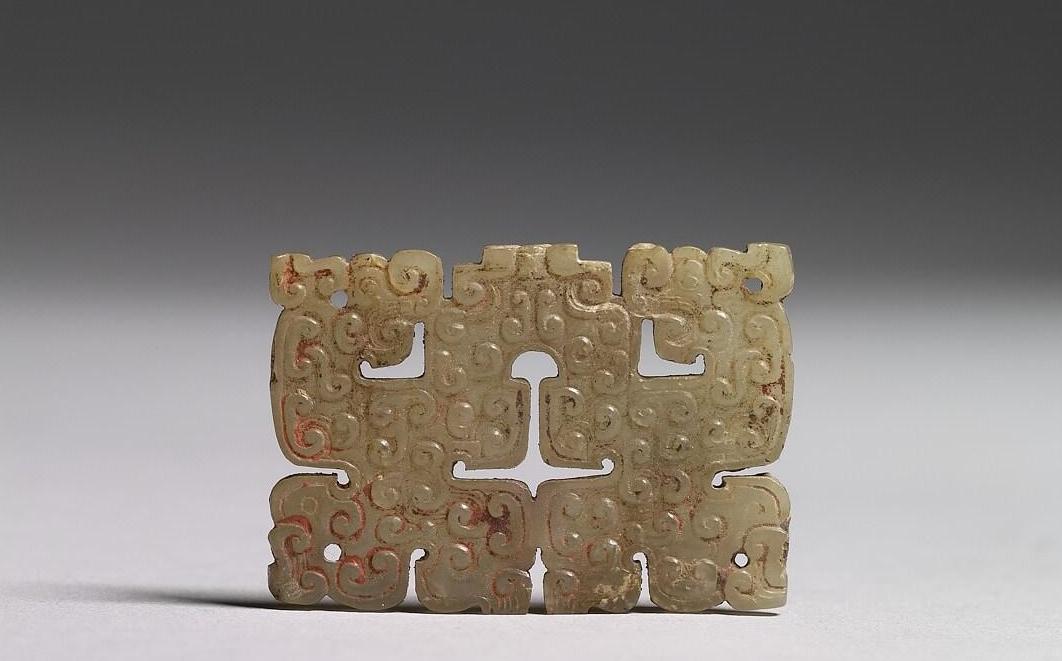
Jade pendant with hollow dragon and phoenix patterns from the Eastern Zhou Dynasty. Collection of the National Palace Museum, Taipei.
Made of jade, with cinnabar on the surface. It is square, with a pair of dragons and phoenixes engraved on it. There is a circle of string patterns along the outline, with cloud patterns in relief and diagonal lines in between. There is a hole drilled in each of the four corners.
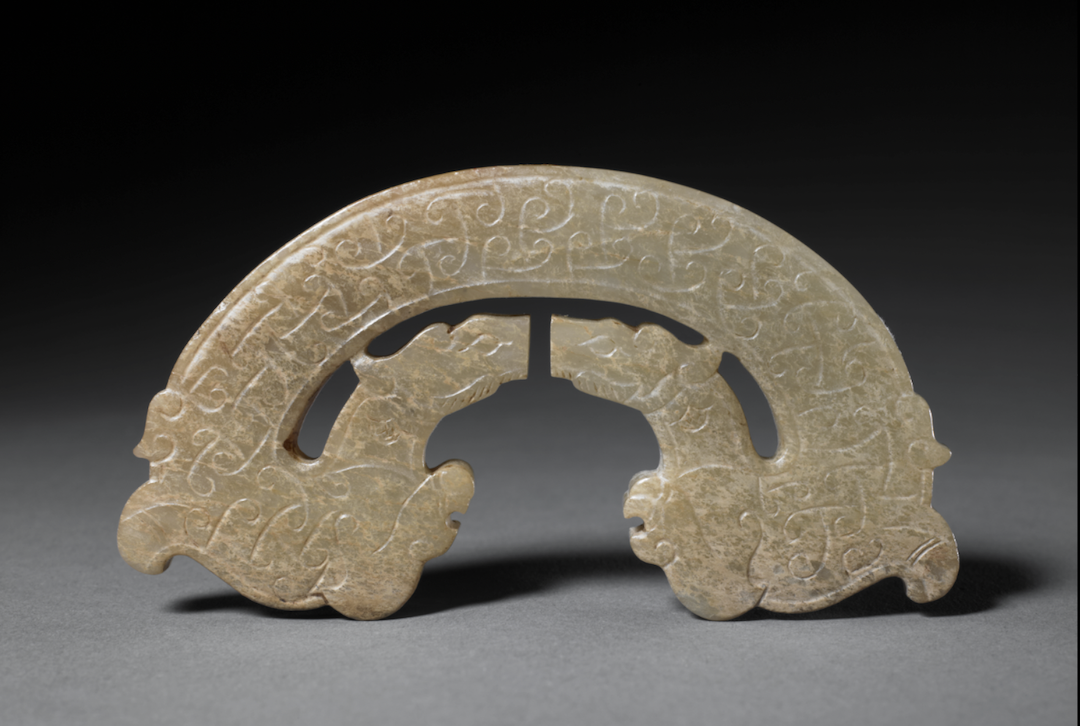
White Jade Double Dragon and Cloud Pattern Pendant from the Warring States Period Collection of the Palace Museum

Jade dragon pendant, mid-Warring States period, jade artifact, collected by the National Palace Museum, Taipei
Made of jade, the dragon is in S shape and its body is decorated with grain patterns.
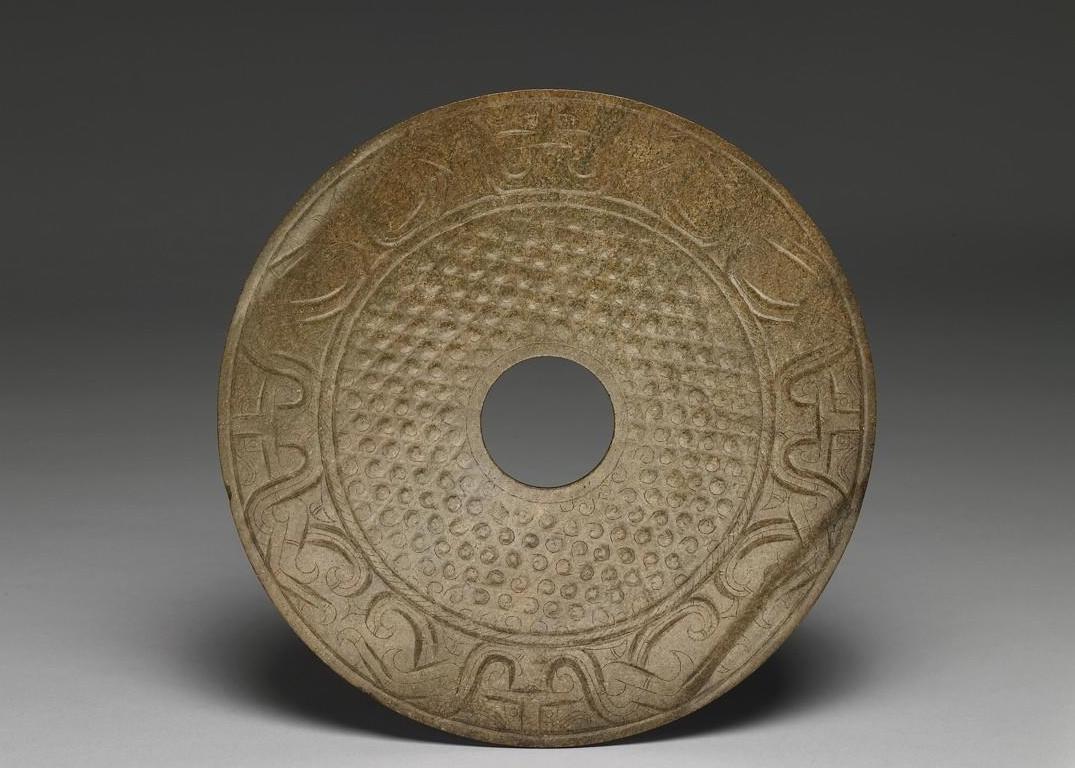
Jade with twin dragon and phoenix patterns, from the mid-Warring States Period to the Western Han Dynasty, jade artifact, collected by the National Palace Museum, Taipei
Originally jasper, it is now dark brown. In addition to the discoloration caused by the early burial, it may also have been slightly stained during the collection and circulation. This type of double-bodied jade with animal patterns began to appear in the middle of the Warring States Period, and became widely popular in the Western Han Dynasty. It is often found in the tombs of great nobles, either as an inlay on the coffin, or as a pillow under the head of the tomb owner or on his chest and back. In addition, they are also commonly found in sacrificial sites. It can be seen that although the production of this kind of large jade seems simple, its specifications are extremely high and it is by no means ordinary. Emperor Qianlong made detailed observations and explanations of this jade bi, and wrote poems on the edge of the jade bi and the back of the wooden base. The content of the poem is: "The system was passed down from Ji Zhou, the title is Yanliu, the name is always determined, the complete happiness is still left, the Kui pattern is around the outside, the chestnut seeds are thick in the bunch, the shade is in the Jiali grain, Wang Sunbao has a reason. Emperor Qianlong's imperial title in February of 1898." (forty-three years, 1778)
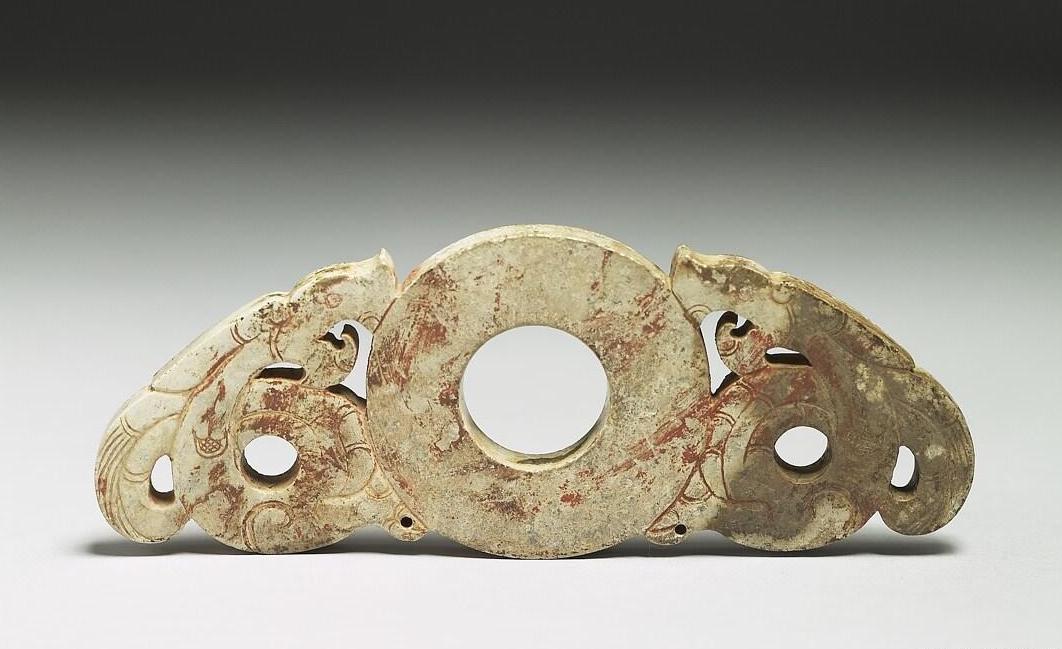
A jade jade with double dragon pattern, dating from the late Warring States Period to the early Western Han Dynasty, jade artifact collected by the National Palace Museum, Taipei
Jade quality, whitening obviously due to exposure to Qin, with cinnabar attached. It is carved into the shape of two dragons embracing each other on a jade. The two dragons face each other, their bodies are wrapped around each other, and the patterns on the dragon's body are smooth and even.
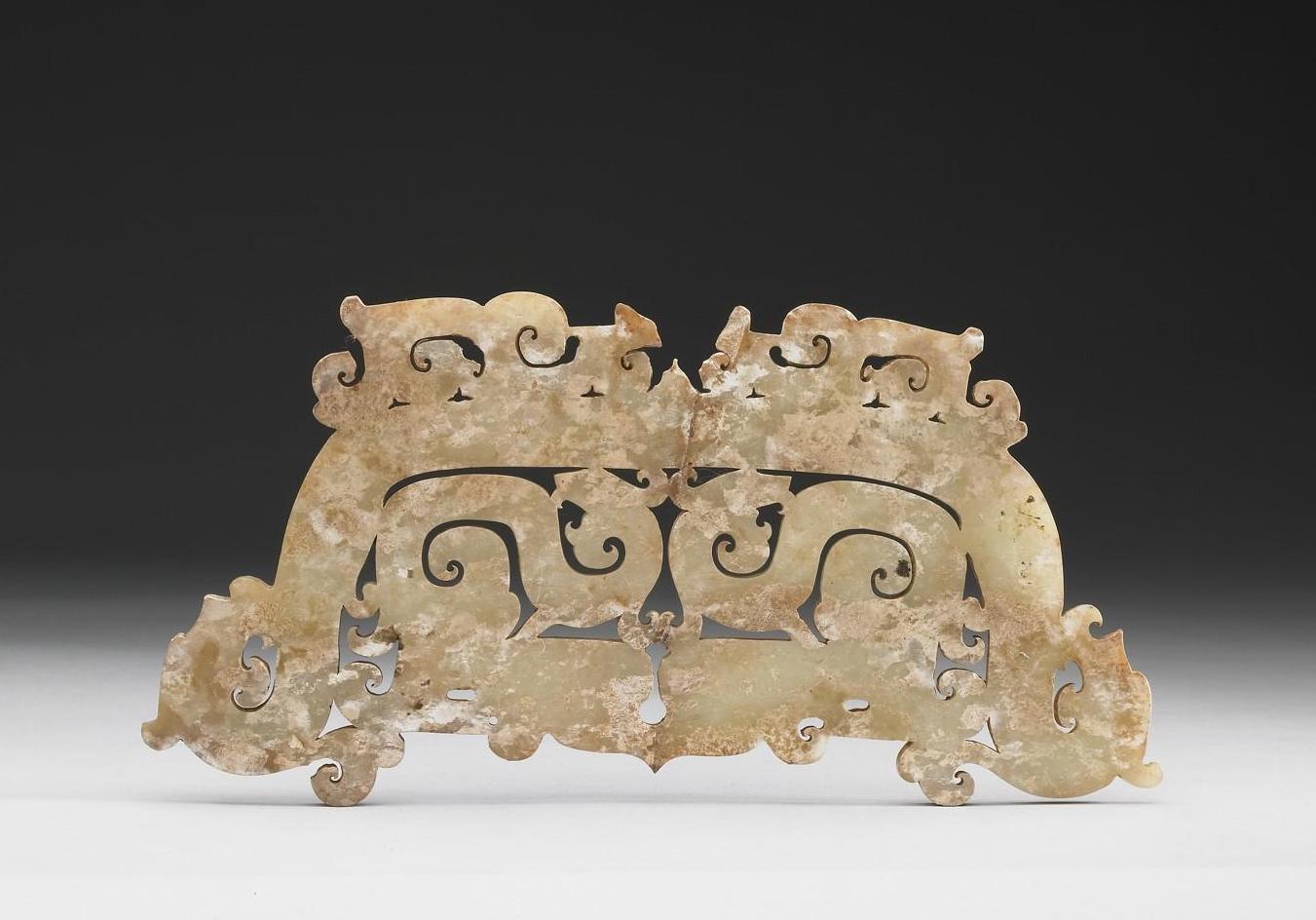
Jade dragon pattern hollow pendant, late Warring States Period to early Western Han Dynasty, jade artifact, collected by the National Palace Museum, Taipei
Made of jade, the whole vessel is light brown due to exposure to Qin, and is partially albino. This piece of jade is unfinished, and only most of the hollowing out has been completed. The hollowing out of the upper and lower edges is still in the initial stage of production. Many short straight lines can be observed on the surface of the jade, which are the positioning lines that were worked out before hollowing out.
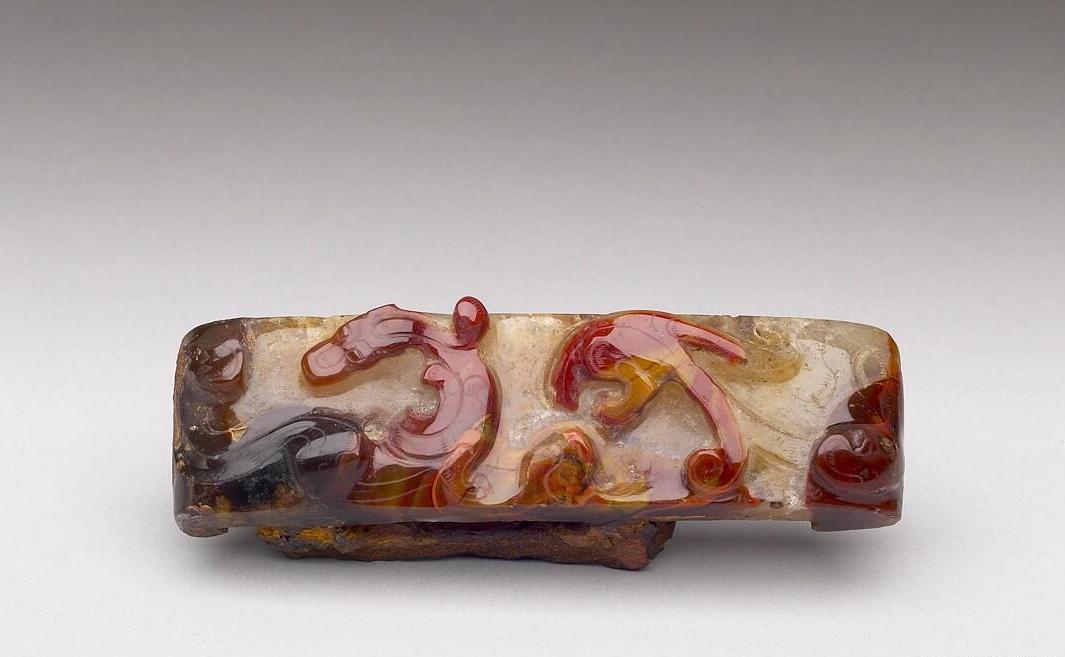
Agate sword with dragon pattern, middle and late Western Han Dynasty, jade artifact, collected by the National Palace Museum, Taipei
Ocher, yellow agate. The dragon pattern is carved on the face and looks lifelike due to the bright properties of agate. There is a square hole for wearing a belt underneath.

Dragon pattern jade ring from the Eastern Han Dynasty, collected by the National Palace Museum in Taipei
Made of jade, the whole vessel is in the shape of a dragon, connected end to end to form a circle. This device is a belt fastener set with hooks from the Eastern Han Dynasty.
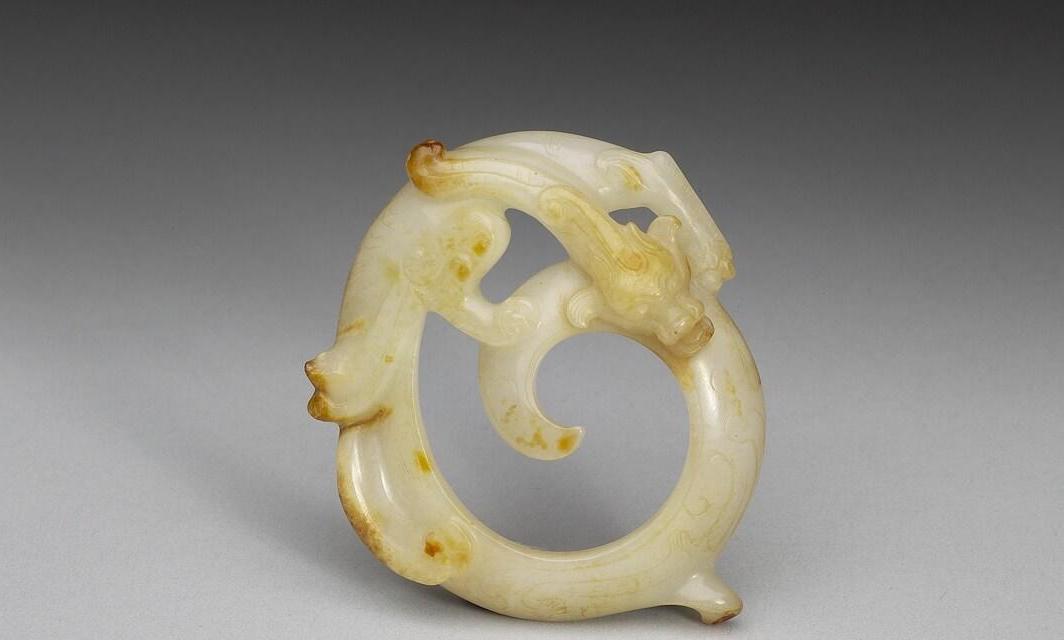
Jade Dragon Ring Jade Stone from the Eastern Han Dynasty Collection of the National Palace Museum, Taipei
Made of jade, the whole device is light brown due to Qin, and some parts are dark brown. The shape and function of this device are the same as those of Gu Jade 2177 "Jade Ring with Animal Patterns of the Eastern Han Dynasty". Therefore, the backs of both are flat to facilitate belt wearing. Only the dragon in this form has a three-dimensional form, with a powerful expression, and its legs leaning forward, giving it an extraordinary momentum and another kind of beauty. The dragon's chin is longer than its upper lip, and its tongue is exposed, which is a common feature of dragon beasts in this period.

Jade dragon-patterned jade-shaped pendant from the Eastern Han Dynasty. Collection of the National Palace Museum, Taipei.
Jade quality, partially bleached by Qin. The main body of the jade jade in the center of the jade-shaped pendant is slender and curved, with a small central hole. The focus of the design is focused on the dragon looking back at the top. The dragon's snout is long, the outline curve is relatively gentle, and the tail is extended downward and clouded, blending with the clouds of the whole vessel. This is a common design form in the Eastern Han Dynasty.

White Jade Open-carved Cloud and Dragon Pattern Belt Buckle Jade Ware Collection of the Palace Museum of the Song Dynasty

Jade dragon plate, Northern Song Dynasty or Liao Dynasty, jade artifact, collected by the National Palace Museum, Taipei
Made of jade, there are brown and yellow spots on the edge of the vessel. The front of the disc is decorated with a dragon pattern, a pointed snout, long horns, a row of round beads carved at the base of the horns, a plump mane, a thin neck, the body is bent and turned like a ribbon, the plane is undulating, the whole body is covered with fine scales, and the scales are covered with shadows. Carved with fine lines, the limbs are full of texture, with three toes on each foot, and the toenail hooks are as sharp as sickles. The gaps are filled with hollow curly grass pattern brocade ground, the level is slightly lower than the dragon pattern. The decoration on the back is the same as on the front. Except for the thick beard and mane of the dragon and the lack of fine lines on the scales, the other details are not simple. In terms of pattern, such a strong and vigorous dragon pattern is similar to the dragon pattern on the jade cabinet attached to the "Jade Book of Zen Zhenzong of the Northern Song Dynasty". The two are similar, and the style is more like the tomb of Princess Chen of the Liao Dynasty. An unearthed gold-flowered silver cassette was found on a jade plate. However, the fineness of the dragon pattern on this jade plate is comparable to the tapestry works with dragon patterns among flowers from the Song Dynasty in our collection. Therefore, it is inferred that this plate should be from the Liao Dynasty in the first half of the 11th century. Or works from the Northern Song Dynasty.
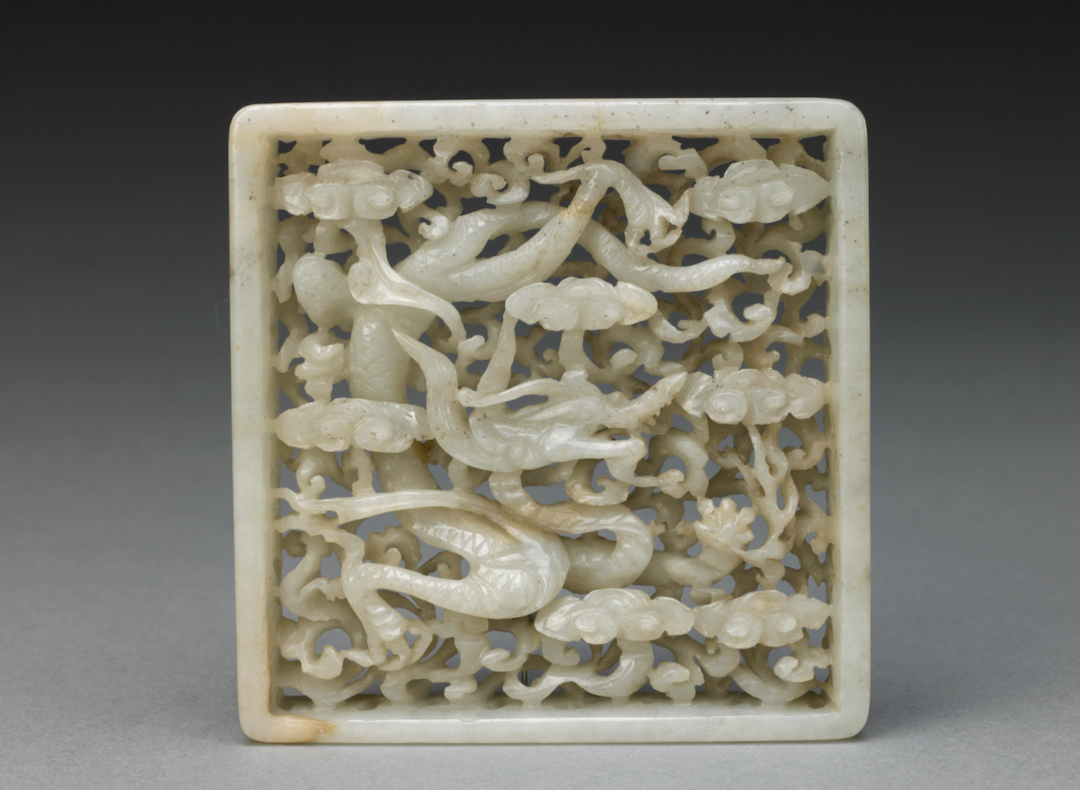
White jade open-carved jade dragon pattern inlaid jadeware Song Dynasty
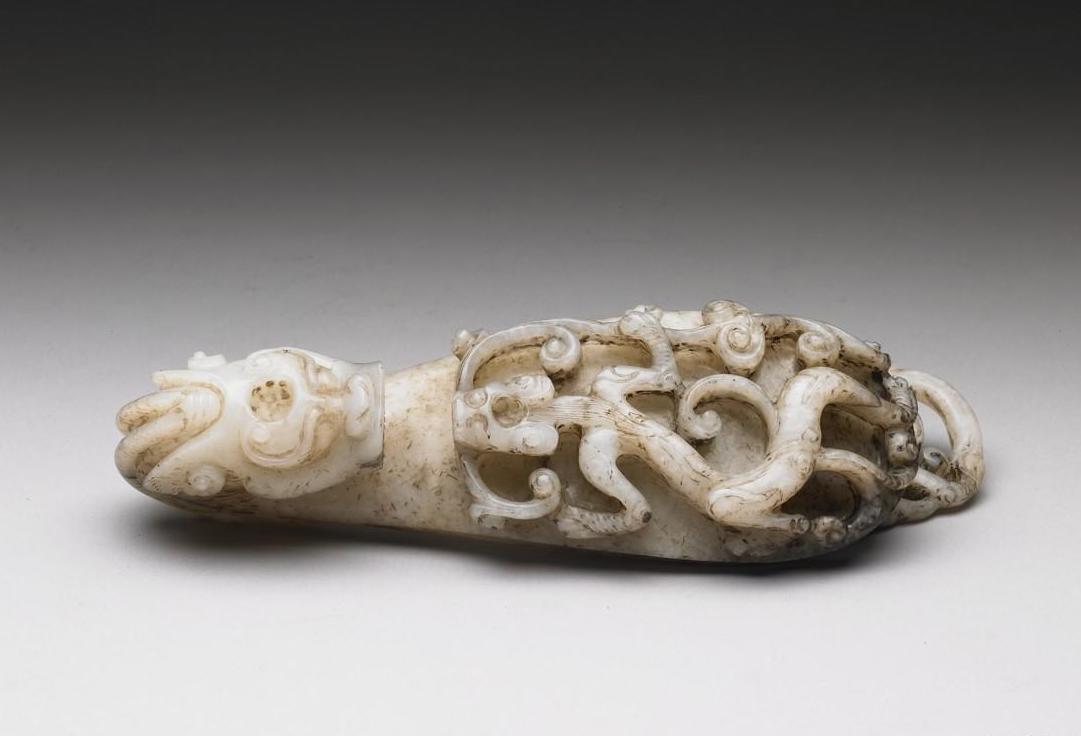
Dragon-patterned Jade Belt Hook Yuan, Jade Artifact Collection of the National Palace Museum, Taipei
Jade quality, crystal white mixed with black ocher spots. The vessel is in the shape of a hook, with a hooked jewelry faucet. The surface of the vessel is decorated with high-relief chi chi patterns, and there is a square column on the back. There is a live ring on the pillar, and the ring surface is carved with chi chi patterns.
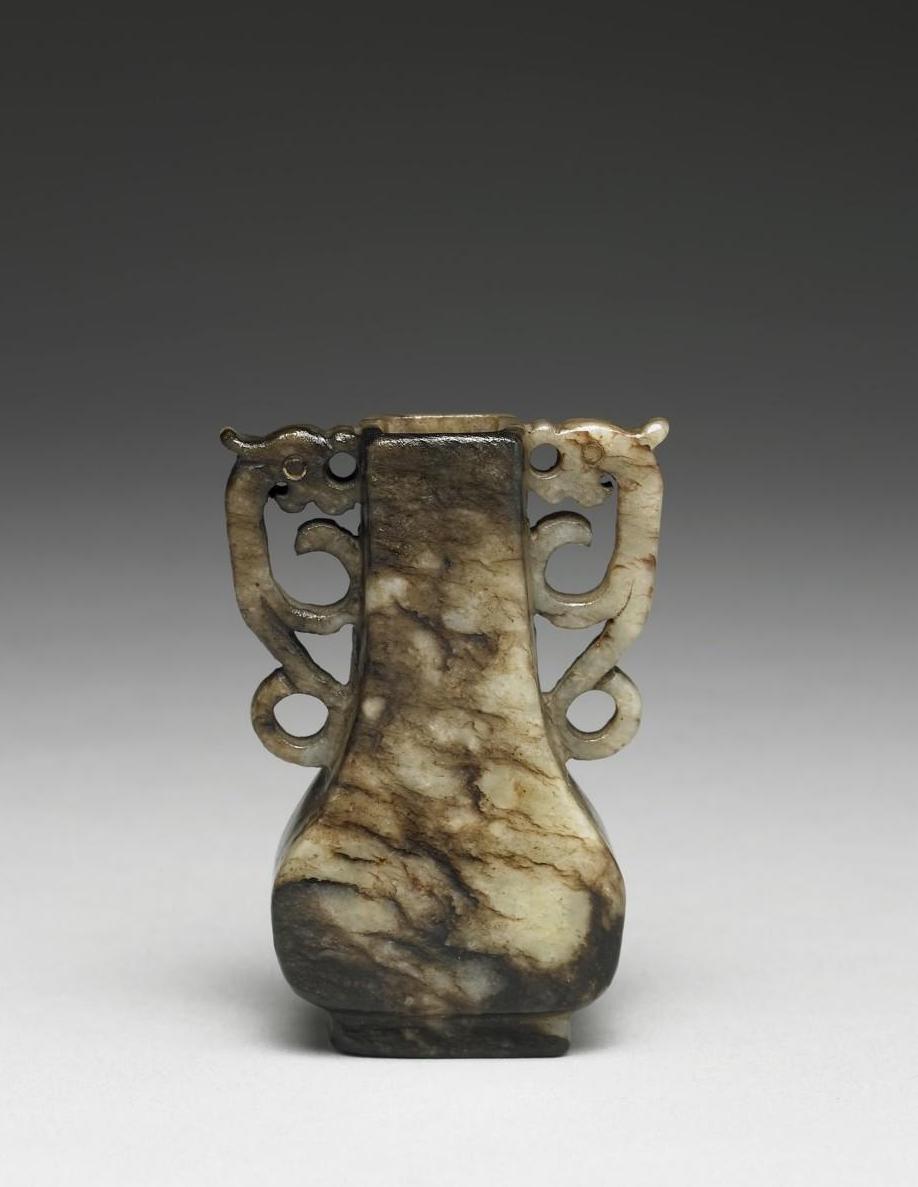
Jade double dragon ear vase, Yuan to early Ming Dynasty, jadeware, collected by the National Palace Museum, Taipei
It is made of jade, with one side covered with dark brown spots and the whole device with filamentous brown hairs, which is the color of graphite invading the jade mine. The small vase has a square mouth, a long neck, a square bulging belly under the shoulders, short round feet, and chilong-shaped ears carved sideways on both sides of the neck. The body of the vessel is smooth and grainless, slightly rough in polishing, but the edges of the mouth and ears appear to have been rubbed. The leather shell is warm and moist, and the simple texture is one of the characteristics of Ming Dynasty jade. Small in size, now stored in Duobaoge.
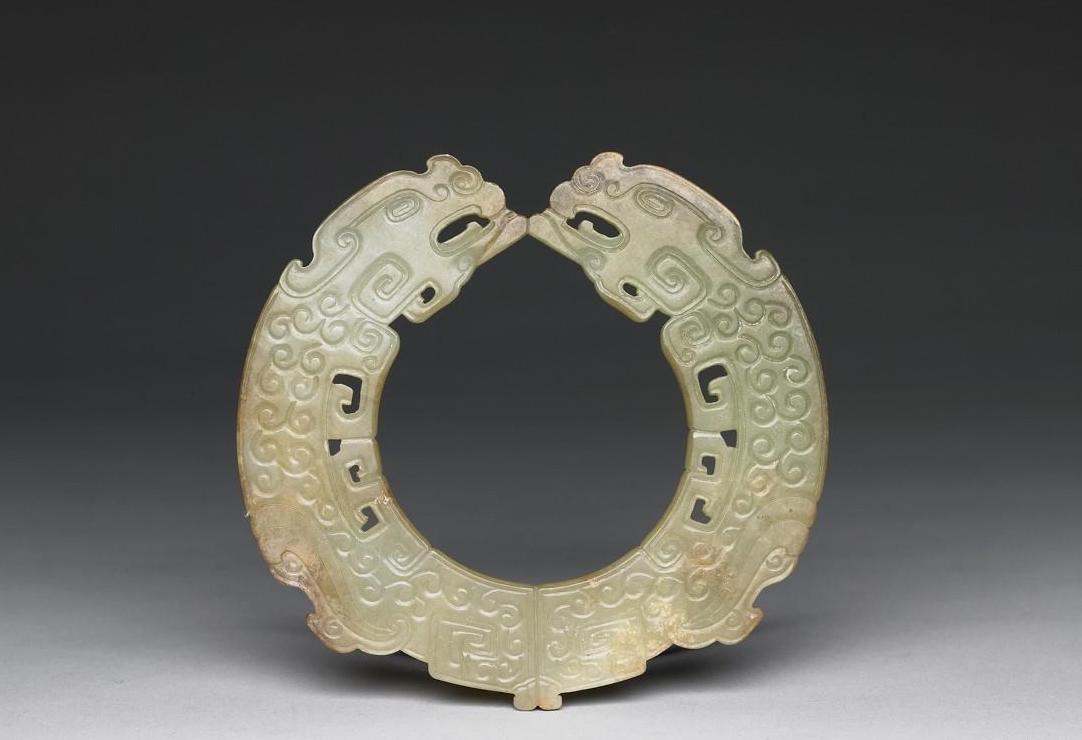
Yulongming Jade Stone Artifacts Collection of the National Palace Museum, Taipei
Sapphire quality. The whole vessel is carved with two dragons facing each other, with their heads facing each other and their tails connected. The dragon's body is decorated with cloud patterns.
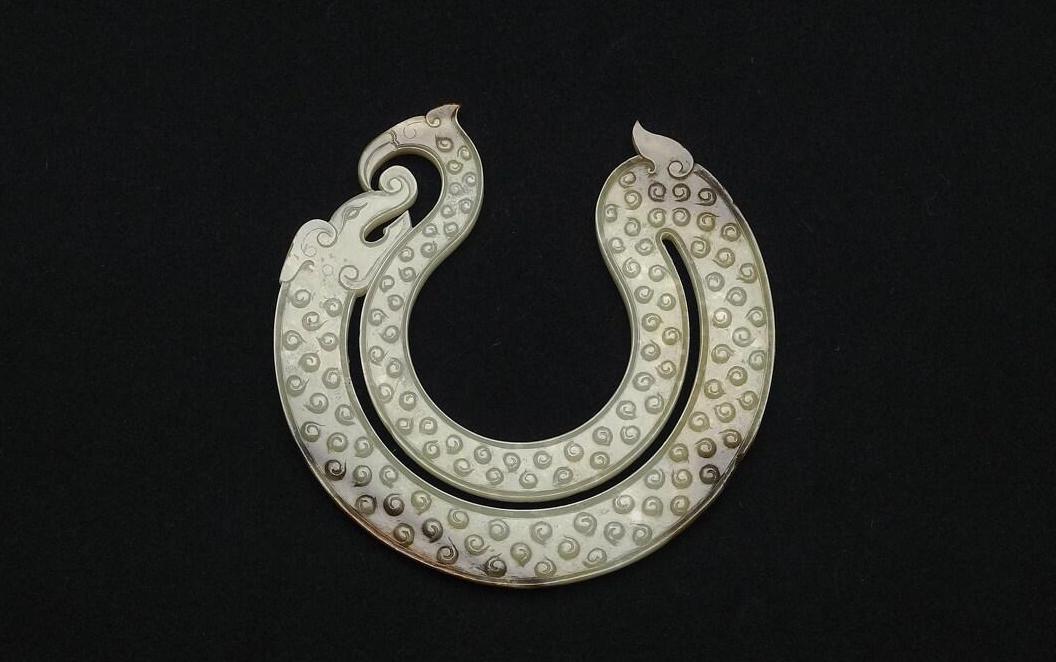
Jade dragon and phoenix pattern Pei Ming Collection of the National Palace Museum in Taipei
The shape of the vessel is like two C characters, large and small, connected from beginning to end. The lines are curved and smooth, and the shape is simple and elegant. In fact, this is a dragon and phoenix with the middle part of the body turned back and the head and tail connected. The body of the vessel is decorated with grain patterns.
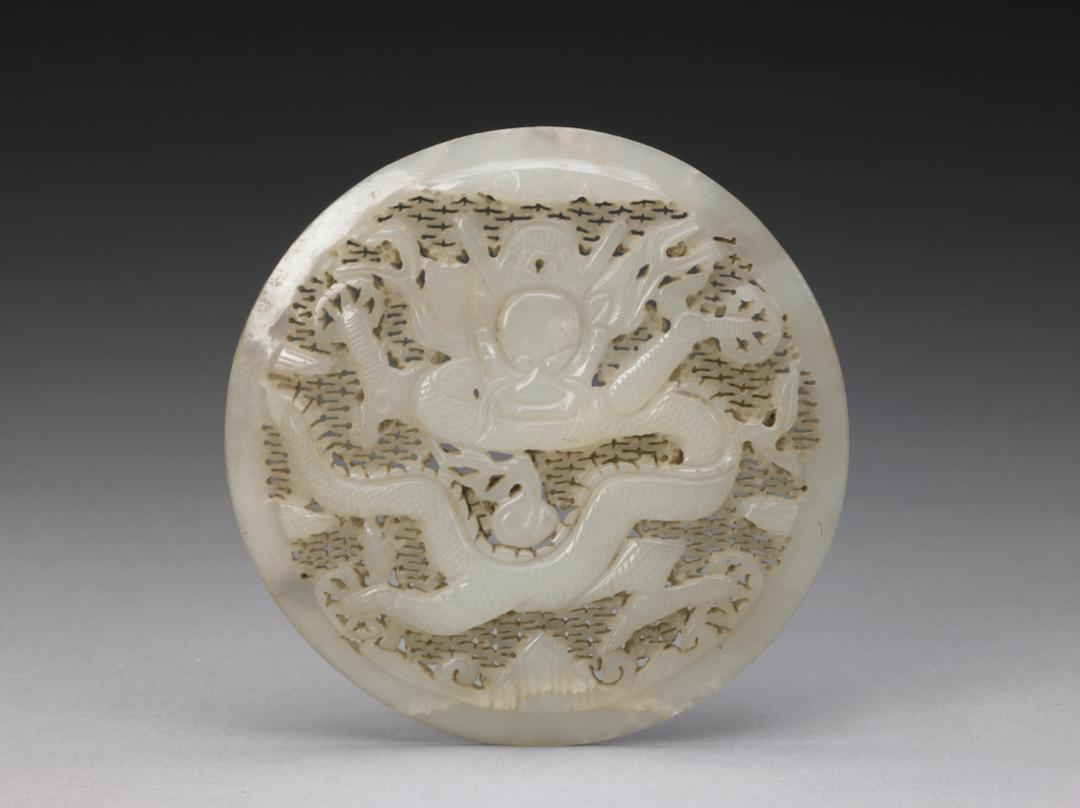
Blue dragon openwork sitting dragon inlay jadeware Ming Dynasty Palace Museum Collection
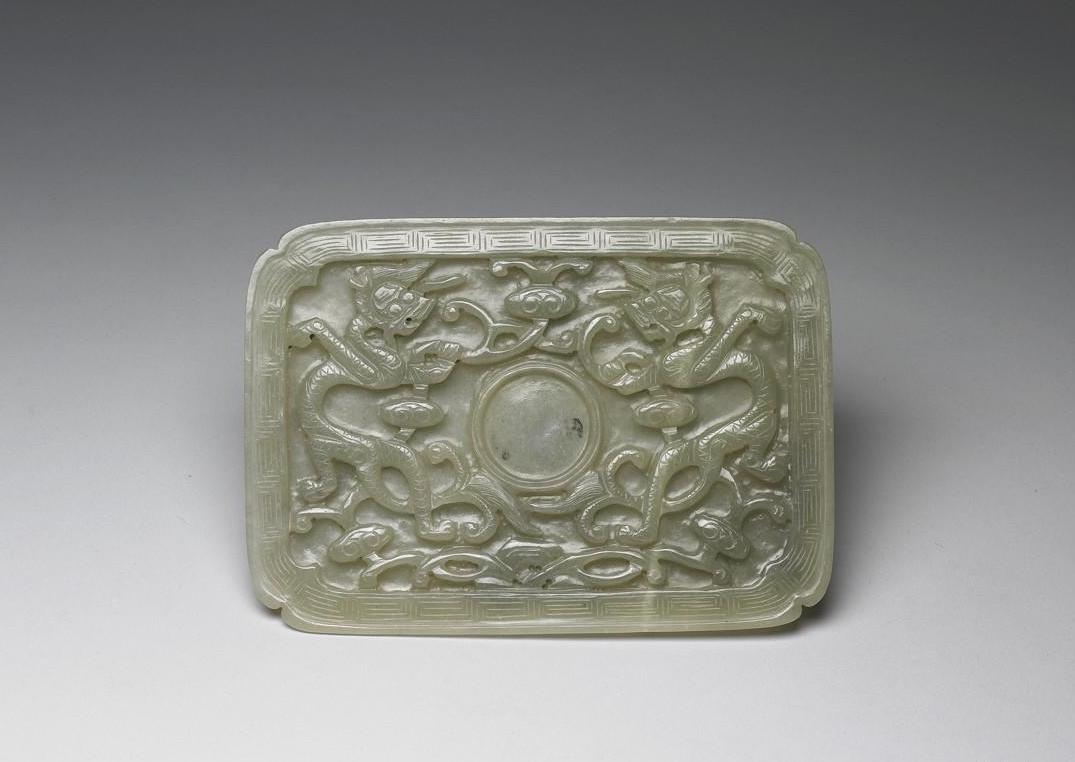
A jade dragon-patterned tray from the middle to late Ming dynasty. Collection of the National Palace Museum in Taipei.
The sapphire is moist and slightly spotted. The vessel is rectangular in shape, with crabapple lace at the four corners and a thin body. The surface of the vessel is embossed with a pair of dragons playing with a ball, symmetrical from left to right, a circular groove symbolizing the shape of a ball, which can hold cups, and palindromes carved around the plate.
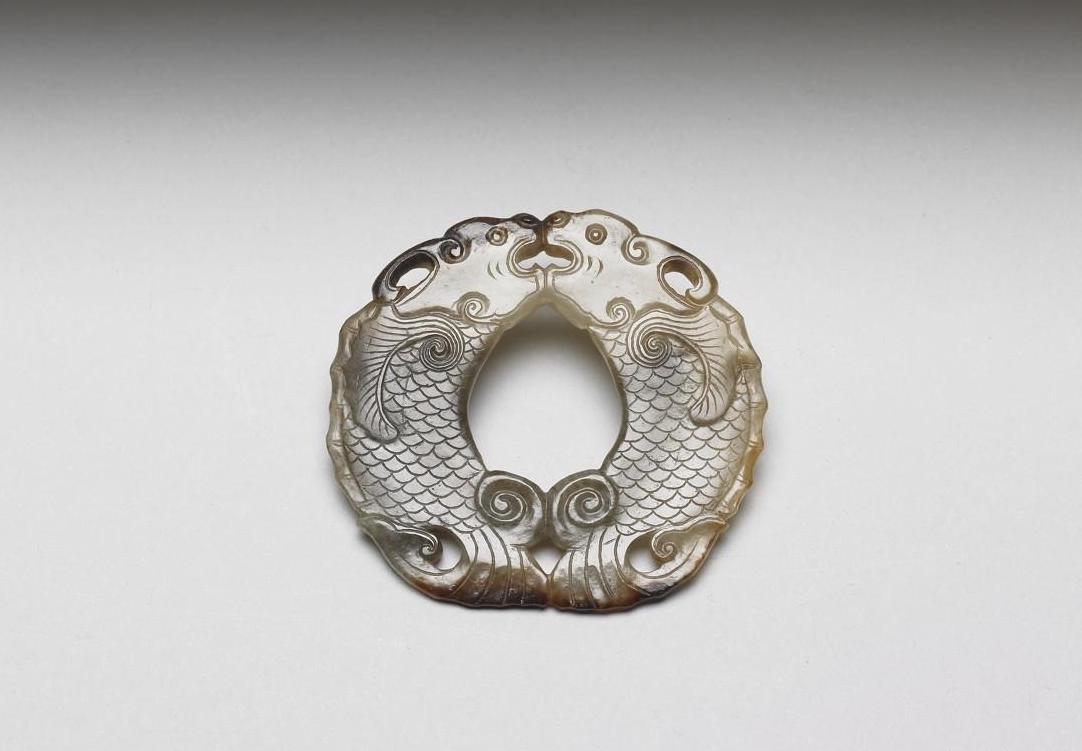
Pisces Dragon Pei jade artifact from the late Ming Dynasty to the early Qing Dynasty. Collection of the National Palace Museum, Taipei.
Jade, gray-green with large ocher spots, and some edges are dark. The round piece of the vessel is flat and looks like two ichthyosaurs facing each other. The ichthyosaur has straight eyes, an open mouth, a round nose and horns. There are holes at the mouth and tail for hanging. The back, abdomen and tail fins are huge, with swirling lines, and the body is decorated with fish scales. Pattern. Same pattern on both sides.

White jade dragon-patterned jade stoneware collected by the Palace Museum of the Qing Dynasty

Qing Dynasty Jade Stone with Jade Dragon and Horse Negative Figure Collection of the National Palace Museum, Taipei
Made of jade, with ocher spots on the face. The dragon and horse are auspicious animals that carry books on their backs. This device is called "dragon and horse carrying books".
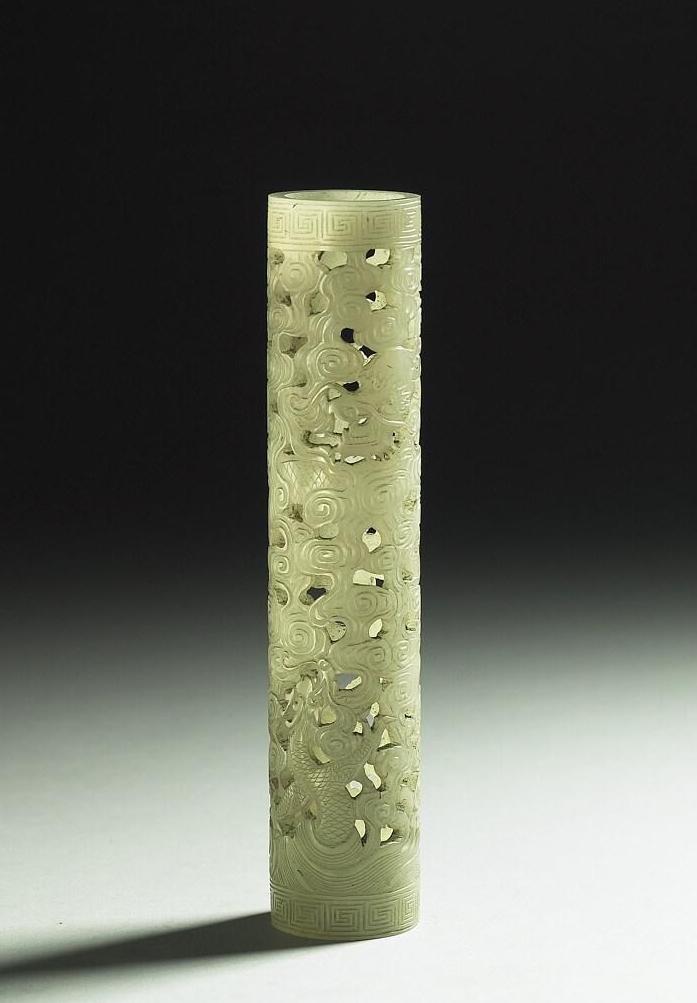
Jade cloud and dragon pattern hollow incense tube Qing jade stoneware Collection of the National Palace Museum in Taipei
White jade cylindrical aroma diffuser, engraved with cloud and dragon patterns, and the mouth and bottom edges are each decorated with a round pattern.
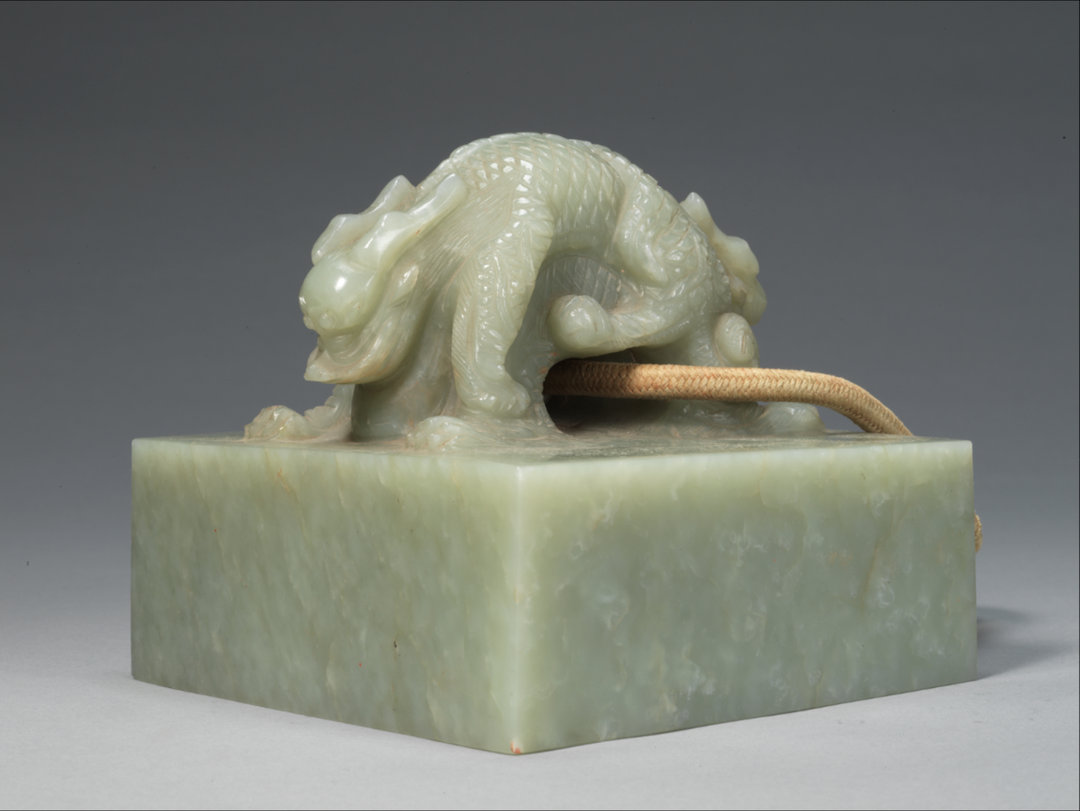
Sapphire dragon horn button "a treasure to punish sins and bring peace to the people", collected by the Palace Museum of the Qianlong Emperor of the Qing Dynasty
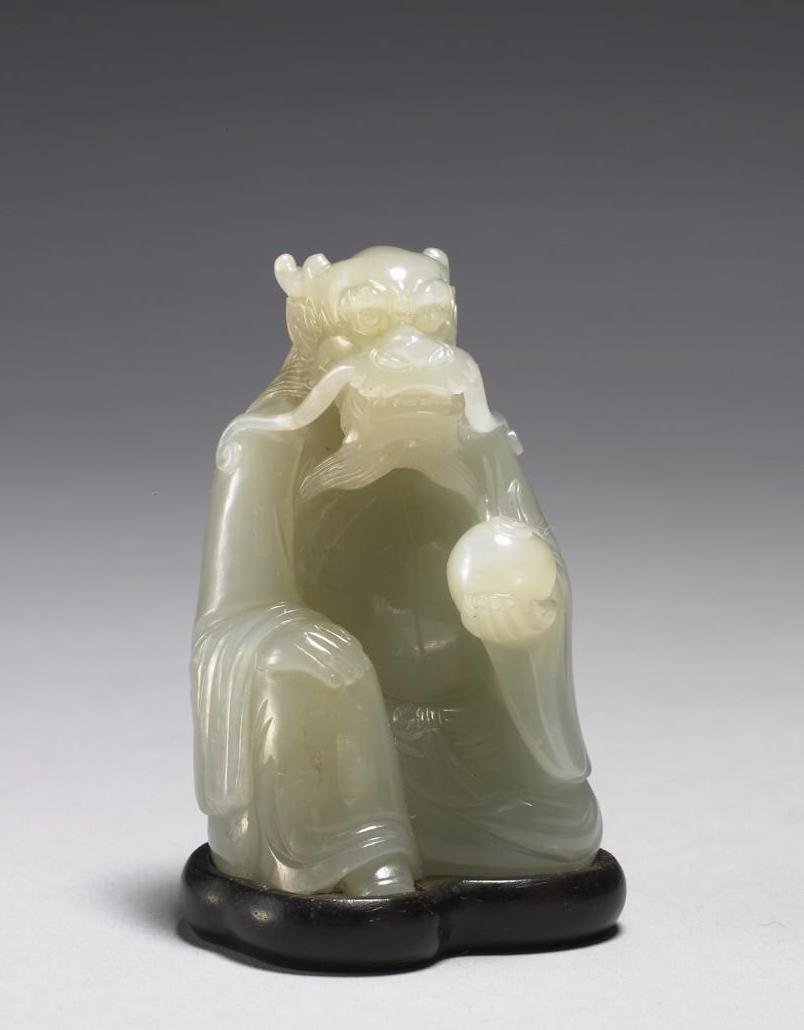
Jade Zodiac Sign (Dragon), Qing Dynasty, Jade Ware, Collection of the National Palace Museum, Taipei
(This article is compiled based on relevant information from the official websites of the National Palace Museum and the National Palace Museum in Taipei)
